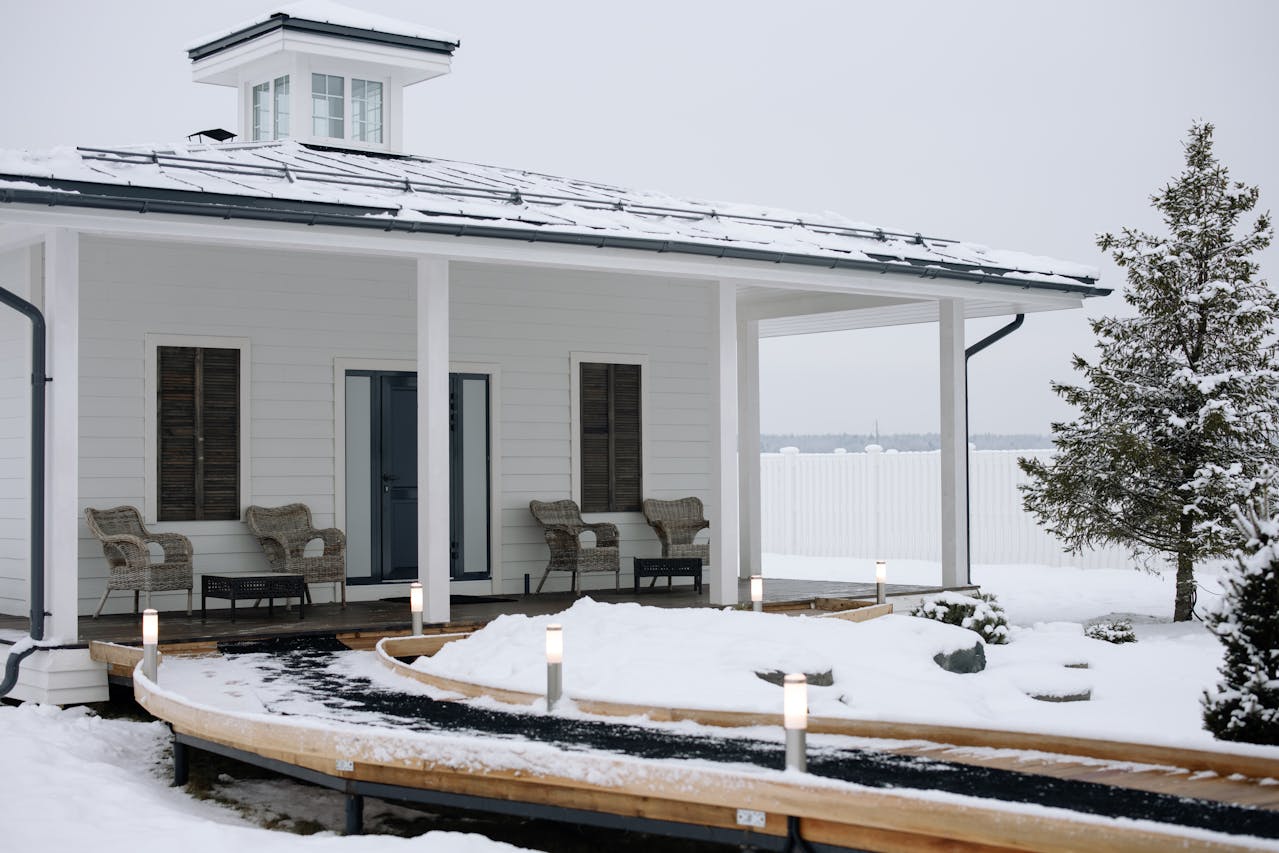PROPERTYSPARK ARTICLE
Determining Hail Damage On Roofs From The Ground Up
Detecting hail damage can be a process, but it’s one you don’t want to put off. So, what are the common signs of hail damage on roofs? We’ll cover what to look for from the ground and on top of your roof.

Detecting Hail Damage From the Ground
Before you grab a ladder and start climbing on top of your roof, walk around your home. Some types of hail damage are easier to spot from the ground instead of on your roof.
Inspect Your Deck and Porch
A good way to get an idea of the severity of the hail storm and its damage is to look over your wood deck. If you have a painted porch, even a concrete one, give it a quick inspection. You’re looking for any signs of damage like chipped paint, even from deck or porch railings. Check the wood planks for any dents or other indications of hail damage.
Why are you checking your deck and porch? If the hail can damage your decking, there’s a good chance your roof also needs some repairs.
Check Your Siding, Window Sills, and Screens
The same principle applies to these areas of your home. If your siding, window screens, or sills are damaged, your roof probably isn’t in ideal condition.
Besides, damage to these areas can result in additional problems. Cracks and dents in the home’s siding, window sills, and screens can allow moisture to seep into the home. Before you know it, you may be dealing with mold and mildew issues.
Not only does it present a health hazard, but your homeowner’s insurance may not cover the repairs. Most homeowner’s insurance policies won’t cover mold and mildew damage if you ignore the cause of the problem.
Air Conditioner Damage
Your outdoor AC unit can withstand a lot, even a hail storm, but it doesn’t mean repairs aren’t necessary. Your air conditioner keeps your home cool and comfortable when temperatures rise. The last thing you want is for your AC to go out in the middle of summer.
Even if the hail damage doesn’t cause your AC to stop working, it may not be functioning efficiently. An inefficient AC unit usually results in higher-than-average utility bills. Checking for hail damage early may also help ensure your air conditioning repairs are covered by your homeowner’s insurance.
Identifying Hail Damage From the Roof
After finishing your inspection from the ground, it’s time to grab a ladder and get up on the roof. To help ensure your safety, it’s a good idea to have someone standing nearby.
Anything can happen from your ladder tipping over to sliding off the roof. If something happens, having someone nearby can help limit your damage. Besides, you don’t want to spend all day stuck on your roof if your ladder blows over.
So, what are you looking for on your roof? Sometimes it helps to start looking for obvious signs of damage like missing or broken shingles. Hail storms can come with strong winds, so it’s a good idea to make sure your shingles are in place. Even one missing single can cause leaks that quickly turn into expensive problems. You may end up having to replace the ceiling due to one missing roof shingle.
Check the entire roof for any dents, which includes the chimney, skylights, and vents. Sometimes finding any dents is tough, especially on reflective surfaces like a metal roof vent. A good tip is to bring a piece of chalk. You can rub the chalk across the area to see if there are any visible dents.
Don’t worry about removing the chalk dust. The elements will take care of it for you. All it takes is a good rain to remove the chalk markings.
Fixing a Roof Damaged by Hail
Hail can do a number to your roof but you don’t want to ignore the damage. Dented roof shingles can easily break and blow off. Taking care of the hail damage now can save you time and money in the long run. Replacing a few dented shingles is less expensive than purchasing a new roof.
Your existing roof is probably still under warranty. Most roof warranties run anywhere from 20 to 50 years. To ensure the warranty stays valid, promptly repairing hail damage is usually a requirement.
Learn how to Become a Top Agent with the Guaranteed 5 Min/Week System
No social media experience needed
Free webinar seat (limited quantities)
Learn the guaranteed 5 min/week system
Become a social media superstar
Constantly get new leads
Beat the competition
Get a special webinar deal
This Agent Tripled His Commissions Just With Social Media
Learn how this real estate agent tripled his commissions just with social media and how you too can become a social media superstar.
Why You Can’t Just “Boost” Your Real Estate Listing
That big blue button has tempted you before right? You want to Facebook Boost your Real Estate listing. Find out why you shouldn’t!
How Much Should Realtors Spend On Social Media
A question we get often from Realtors is “how much should I spend on social media?” Find out exactly how much to spend and how to spend it without getting ripped off!



